After abundant torrential rains, the rainwater passes by channels of erosion. She takes tiny particles of loam. These channels succeed in small flat depressions of ground in which pile up with time the particles of loam brought by the water. Permanent accumulation constitutes a fine layer of sediments which prevents the immediate seepage of the water. In these depressions of ground, the soil remains therefore longer humid as in the more rigid slopes of the dry lawns.
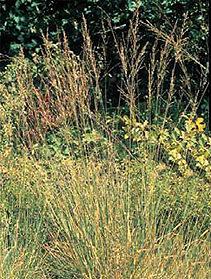
The Purple moor grass forms big tufts.
These humid conditions of ground in depressions allowed the training of a plant society well apart, the meadow in molinie.
In the meadows in molinie, they find a lot of kinds of nice known flowers of meadows, among which here are the most typical: Bluebells, Cardamine des Prés, big Margaret, Lotier cor-niculé, lancéolé Plantain, bulbous Crowfoot, jacée Centaury, Centaury scabious. One are also found there rare kinds as the Southern adder-stongue (Ophioglossum vulgatum), Inule with leaves of willow (Inula salicina) or Gymnadène with long spur (Gymnadea conopsea).
The meadows in molinie distinguish themselves by their as a whole late development, which is due mainly to the slow warming of the humid soil.
Typical species of the meadow in molinie
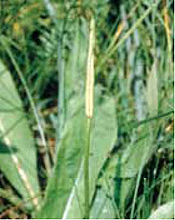 |
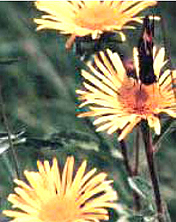 |
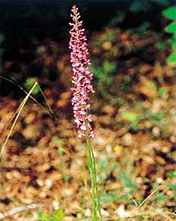 |
| Southern adderstongue Ophioglossum vulgatum |
Willowleaf yellowhead Inula salicina |
Fragrant orchid Gymnadenia conopsea |
Purple moor grass (Molinia caerulea)
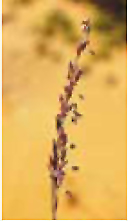
The panicule has fine branches with ears.
The Purple moor grass is part of the big family of grasses. The long-term grass distinguishes itself by its growth in thick tufts. The round stems from 50 to 120 cm high have knots only near the soil and which are very close to some of others. Elsewhere stems do not have knots.
In the meadows in molinie the molène prevail. She appears only in summer and only in autumn in all her splendour. During blossoming from July till September, the meadows in molinie show a blue-purple colour, due to the colouring of the panicule of the molène.
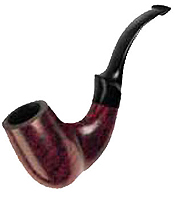
The German popular name translated literally (grass with pipe) points out that the grass was used to clean pipes. Its long stems devoid of knots take part particularly well in this effect.
In autumn, these meadows distinguish themselves by the golden yellow colour of leaves and of stems of the molène fading.
In winter, stems and leaves die. There remains only the lower part of the stem which stores nutriments for the shoot of next year.
The molène is very spread in Europe. But it is possible to find her also in North Africa, in Asia of the North and of the west.
